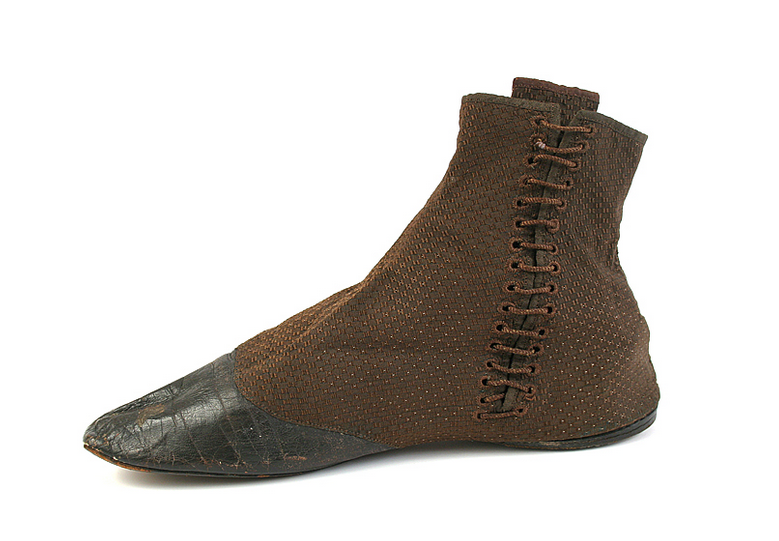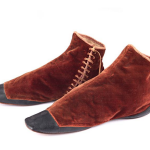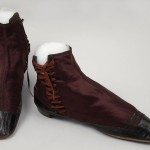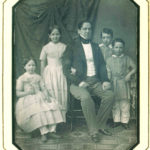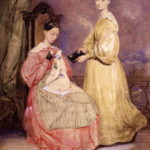Side-lacing gaiter boots with leather toes aka Adelaide boots , Great Britain, ca. 1830-40
Side-lacing boots, or “gaiters,” were fashionable from the 1830s to the 1860s. During this time, women’s footwear changed very little, and only minor shifts in the squareness of toes or the height of the top of bootees occurred. Side-lacing boots like these were meant for outdoor use. The leather applications on the toes and often heels were known as “foxing,” and protected textile shoes from wear. Boots of this shape were also made in satin, but were confined to indoor use.
Most ladies’ shoes of this period had a very short life – they were thin, with thin soles, and often were often made by the lady who wore them. In 1855 an anonymous Lady published a small book of instructions for making shoes at home: “Every Lady her own Shoemaker or, A Complete Self-Instructor in The Art of Making Gaiters and Shoes“. Her patterns are for shoes, for ankle-high gaiters with fabric uppers, leather soles, leather heels and toe-caps, for Congress gaiters with an elastic gore instead of a laced opening, and also for a man’s slippers. This facsimile copy includes 6 pull out diagrams. You can get your own little copy from Originals by Kay.
By the mid 1860s, gaiter boots had small heels, and were then eventually replaced by front-lacing and side-buttoning styles.
Photo via: Shoe Icons • For a reproduction of this type of shoe check the website of American Duchess.
.

